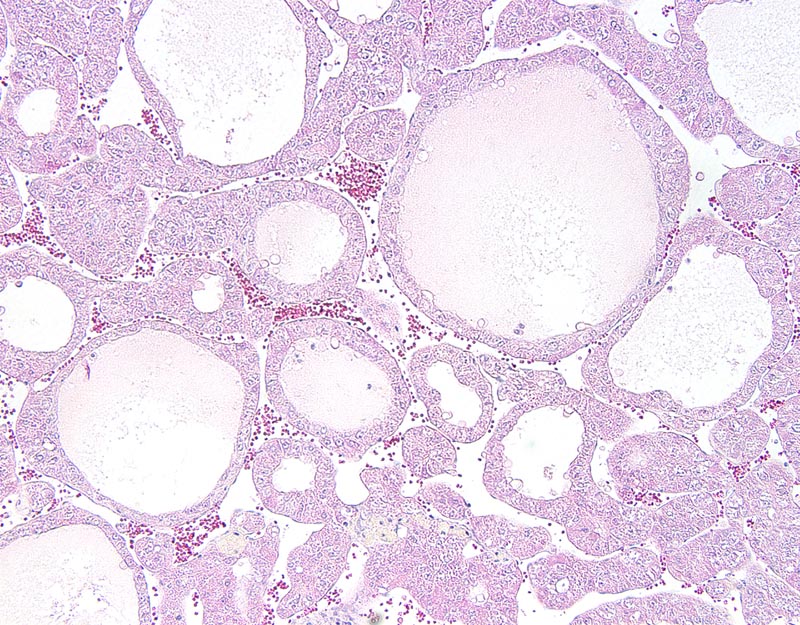Caption |
Fig. 1F. Hepatocellular carcinoma, pseudoglandular pattern: the neoplasm is composed of trabeculae with central cavitation and formation of cystic spaces. These cystic spaces generally are filled by a proteinaceous material and they are lined by a one cell-thick cuboidal to low columnar epithelium. Neoplastic cells have distinct cell borders, occasionally apical blebs, and a finely granular acidophilic cytoplasm. The nucleus is central to basal, medium-sized, round to oval, and hypochromatic. Anisokaryosis and anisocytosis are mild. |
